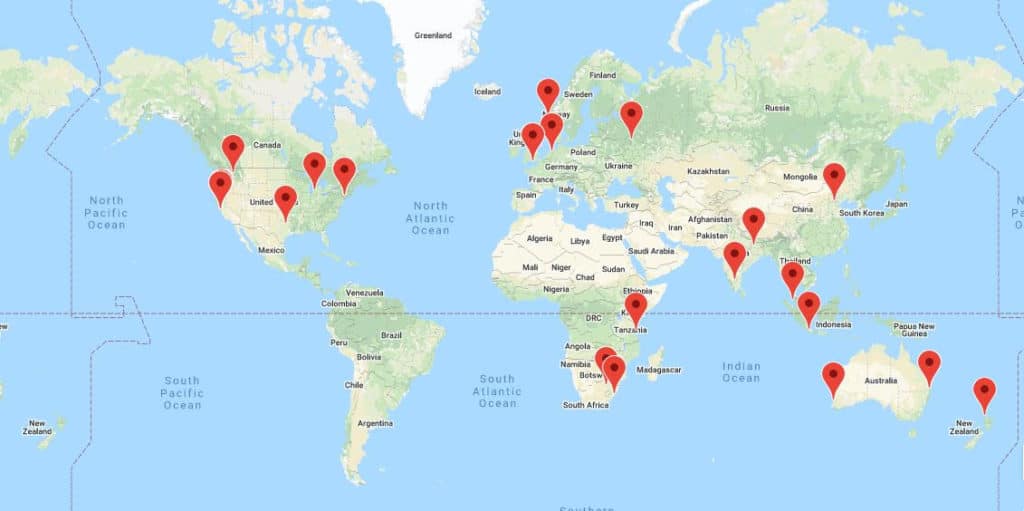Subscribe to our newsletter
State of Open Monographs Series: Opening Monographs in an Age of COVID-19
With book content being made free-to-read during the COVID-19 crisis, Charles Watkinson, Associate University Librarian for Publishing and Director of University of Michigan Press, provides a US view on the impact so far.

Many publishers have responded to the COVID-19 pandemic by relaxing access restrictions, and various library communities have developed resources for maximizing this temporary free access. University presses have been particularly vigorous in responding to support the rapid move to remote learning and research. More than 80 members of the Association of University Presses have opened up a wide variety of their books (as well as journals) since early March.
The initiatives vary in scope: Some presses released a selection of content useful for understanding the pandemic while others have made available much larger collections. They also vary in terms of time limit (end of June is the current norm) and degree of openness (some collections require registration, others do not; some titles are free-to-read, others are free-to-download also).
When asked about the rationale behind opening up whole collections, press directors highlight the “mission-driven” identity of their organizations. As Donna Shear, director of University of Nebraska Press, notes “Honestly, it was all about mission. Students and scholars need easy access to materials, as do professionals. We didn’t want to put up any roadblocks. As a part of the overall academic ecosystem, we felt we needed to do our part.”
John Sherer, director of University of North Carolina Press (which has removed paywalls from its collections with aggregators), agrees and also reflects on the pragmatic opportunity this offers: “One of the perhaps unintended consequences I’m hoping for in this crisis is that our books will actually be used a great deal, validating the idea that the type of publishing we do is worthy of support, whether it is through cost-recovery (selling stuff) or more creative models (like ‘subscribe to open’).”
In uncertain times, these are experiments in openness
Not all university presses are participating and there is a definite feeling of nervousness behind the scenes. Are we giving away the farm? Will our authors feel that we’re protecting their rights and incomes at a vulnerable time? Will libraries spend their precious budgets on other publishers’ works when they see ours are free at the moment?
Tony Sanfilippo, director of The Ohio State University Press (which opened up all its monographs, textbooks, and journals early) graphically describes his decision process: “What I had to weigh was the lost revenue versus the continued access that scholars and students needed through this extraordinary crisis. How I could help hundreds of students, graduate students, and scholars. Considering the current collapse of book sales, in retrospect, the lost revenue becomes less relevant because there’s little reason to believe those books, in particular, would have earned much revenue currently anyway. And at this point in the annual textbook cycle more books are being returned than being purchased.”
As the German essayist Walter Benjamin wrote: “These are days when no one should rely unduly on his ‘competence’. Strength lies in improvisation. All the decisive blows are struck left-handed.” Not only do these temporary free-to-read initiatives give presses the opportunity to highlight their “mission-driven” identities, but there is a pragmatic interest in understanding what the effects of making ebooks editions free might be. This is particularly important as funders move to include books in their open access policies. We are, for example, in the midst of the consultation process on the UK Research and Innovation proposed open access policy, currently set to include monographs, book chapters, and edited collections from January 1, 2024.
It’s early days in measuring the response to these initiatives
From a quantitative perspective, Google Analytics unique pageviews of the University of Michigan Press Ebook Collection have increased over 650% since the collection was made free-to-read on March 20, COUNTER 5 unique title requests are more than double what they were for the equivalent period in 2019, and over 95% of authors in the collection have indicated that they are supportive. Anecdotally, Sanfilippo reports that the reaction “has all been very, very positive. Authors, administrators, scholars, students, librarians; they have all universally supported this move. It has made the staff a bit nervous, but the support and praise we’ve been receiving from the administration for this move has been reassuring.” Shear adds that: “Our administration has been very supportive of our decision, even writing about it in their newsletter. We’ve only had two book authors ask that their books be put back behind the paywall, and I wonder if we took the time to explain everything to them, they’d change their minds”.

Usage of the University of Michigan Press’s ebook collection illustrates the unprecedented geographical spread of engagement since books were made free-to-read. A snapshot of content views at one point of time on 04/14/2020.
Sherer also points out that: “The reaction from my community (that is, my authors, our librarians, teachers, students and researchers) has been overwhelmingly supportive. When we try to pick up the pieces and rebuild a book publishing model, these are the members of the community that will need to voice their support for the work UNC Press does.”
As Sherer highlights, there is a grim reality behind the positive experiences of these free-to-read programs. Monograph and coursebook publishing were already struggling financially before the COVID-19 shutdown and as many presses project their 2021 financial year budgets, the financial situation looks bleak.
As the scholar Samuel Moore writes, “Higher education is predicted to be badly hit by the crisis and this will have a knock-on effect on purchasing decisions, university press subsidies and overall budget availability. . . While this might increase the amount of open access research available, it will be at the expense of the loss of control by the research community and the continued dominance of a handful of players.” Clearly communicating that demand for university press books online is exploding even while library monograph budgets sharply decrease is more important now than ever if the bibliodiversity that university presses, scholar-led publishers, and small independent commercial publishers represent is to be preserved.
SEE MORE POSTS IN THIS STATE OF OPEN MONOGRAPHS SERIES
DOI for this blog series: https://doi.org/10.6084/m9.figshare.12347939



